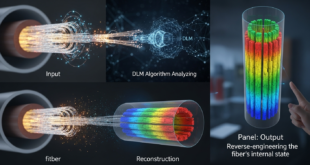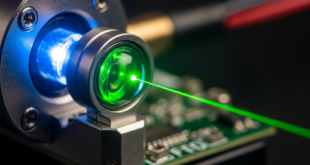The coming 5G standard will offer towering benefits, such as enhanced speed and performance, lower latency, and better efficiency. The 5G networks are rapidly adopting various developing technologies to provide high-speed data delivery. The 5G technology is being used in a variety of applications such as smart city, Industrial Internet of Things (IIoT), and smart grid to meet the user needs and provide faster connection speed with high reliability and low latency for remote access to routine services.
But it will also come with risks. Mobile communications systems have evolved through wireless technology innovation into 2G, 3G, and then 4G to keep pace with ever-increasing voice and data traffic. Security mechanisms have also been enhanced in mobile communication systems. For instance, one-way authentication in 2G has been elevated to mutual authentication in 3G & 4G; key length and algorithms are becoming more robust; as mobility management is improving, a forward key separation in handovers has been added in 4G; also more effective privacy protection is considered. However, 5G is no longer confined to individual customers. It’s not simply about having a faster mobile network or richer functions in smartphones.
Although 5G is susceptible to many of the same cybersecurity risks found in today’s existing telecommunications and enterprise networks, it’s also subject to new avenues of attack against core network services due to a more complex ecosystem of technologies and operations.
Moreover, 5G communication systems are prone to security vulnerabilities, and various existing studies show the types of attacks that can significantly affect network performances. Furthermore, since these systems must operate instantly, the presence of contaminated codes, malware, wormhole, Trojans, and viruses in 5G devices can disrupt the entire network.
The classical techniques can be divided into two categories: Symmetric and Asymmetric cryptographic, where the suitable categories rely on the required number of keys for encryption. However, both types are determined by the complexity of the mathematical factorization. With high technological computing such as quantum computing, any complex problems can be solved within a few minutes. Today’s standard key exchange algorithms (such as Diffie-Hellman and RSA) are thought to be vulnerable to attacks by large-scale quantum computers.
As such, there are two possible routes for avoiding this future threat: quantum-resistant algorithms (QRAs), such as those being developed under the NIST program, and quantum key distribution (QKD). One advantage of QKD is that it is secure against any future computational threat, be that classical or quantum, whereas IRAs may be insecure against a future quantum hacking algorithm, which is yet to be discovered
QKD for 5G Security
QKD, or quantum key distribution, is a method of communication that allows two parties to create a shared random “key” that is known only to them. This key can be used to encrypt and decrypt messages. It continuously generates encryption keys that are immune to attacks because any disruption to the channel breaks the quantum state of photons, which signals hackers are eavesdropping. By installing quantum technology like QKD at key “hub” locations throughout the fiber network that underpins 5G, data trafficked on the 5G network could be protected.
In 2020, Verizon trialed quantum key distribution (QKD) in the Washington, D.C. area, and it plans to be one of the first carriers to pilot QKD in the U.S. “Verizon’s own tests, as well as other industry testing, have shown that deriving ‘secret keys’ between two entities via light photons effectively blocks perfect cloning by an eavesdropper if a key intercept is attempted,” said IDC analyst Christina Richmond in a Verizon blog about the trial. “Current technological breakthroughs have proven that both the quantum channel and encrypted data channel can be sent over a single optical fiber. Verizon has demonstrated this streamlined approach brings greater efficiency for practical large-scale implementation allowing keys to be securely shared over wide-ranging networks.”
Bristol University’s Breakthrough research using quantum cryptography addresses security in 5G networks
The work was carried out by the High-Performance Networks (HPN) Research Group at the University of Bristol’s Smart Internet Lab and following a competitive peer review selection process.
The proposed solution will enable 5G network operators to offer ultimately secure 5G services while guaranteeing ultra-low-latency and high-bandwidth communications. This is due to the novel combination of quantum and infrastructure virtualization technologies.
Recent advances in software engineering and commodity computing technologies have revolutionised the telecommunications industry in the past ten years. Entire classes of network communication services that have traditionally been carried out by proprietary, dedicated hardware, are now virtualised and hosted in commodity computing servers. This is commonly referred to as ”Network Softwareisation”.
The move of critical network communication functions into software, distributed across the internet however, imposes significant security risk for telecommunications networks and specifically for 5G networks that rely entirely on such software architecture. Any malicious attempt to tamper with these virtualized network functions can potentially put the whole internet and its users at risk.
The new research addresses this problem with a new, fully programmable network virtualization platform leveraging on quantum technologies for securing function virtualisation and service orchestration.
The proposed quantum secured 5G virtualization platform is capable of working across multiple 5G operators’ networks (i.e. EE, O2, Vodafone etc.). It uses advanced and standard compliant virtualization technology for creating on-demand complex and collaborative 5G network services across operators’ domains, while utilising quantum cryptography and optical interconnection infrastructure to secure services and guarantee 5G Key Performance Indicators (3GPP KPIs).
Professor Reza Nejabati, Head of the HPN Research Group, said: “Hardware and software technologies reported in this paper can potentially revolutionise 5G networks. They empower network operators to leverage the flexibility and programmability offered by virtualization technology in order to create new types of internet services while taking advantages of transmission at the speed of light and also securing the system using quantum technology”.
Professor Dimitra Simeonidou, Director of the Smart Internet Lab, added: “5G networks will transform communications, industry and society in the next decade. However, security is a key concern for 5G deployment and is expressed widely in global media. The University of Bristol has pioneered research on 5G and quantum for a number of years and more recently led a number of landmark demonstrations of 5G benefits. With this new work, we bring together our research strengths to provide an ultimate security solution for 5G networks.”
NATO Science for Peace and Security (SPS) Programme
NATO Science for Peace and Security (SPS) Programme research and development projects have been examining the security-related applications of quantum technologies, addressing their three main fields: computing, sensing and communications. Quantum computing and sensing are improving the abilities of computer and remote measurement technologies to levels that they are not traditionally able to achieve. In the field of quantum communications, SPS activities are showing the most promising results. These projects develop systems for the encryption and secure transmission of information using quantum key distribution (QKD) and post-quantum cryptography (PQC). Through these techniques, they respond to rising security concerns related to new technologies – such as quantum computers, which can decipher secret communications – by preventing unauthorised access.
Meanwhile, researchers at a university in the Czech Republic are studying the application of QKD technology on a 5G network to explore its potential to enhance cyber security in future communication systems.
As a Czech project co-director, Miroslav cooperates with colleagues from the Czech Republic and Bosnia and Herzegovina on integrating Quantum Key Distribution (QKD) in 5G cellular networks. QKD is a quantum communication system that allows data to be sent over classical networks, while the keys to decrypt the information are transmitted through quantum means. This technological novelty aims to examine how encrypted data can be transmitted without being decoded by a potential eavesdropper and will be tested against cyberattack scenarios at the university campus of the Technical University of Ostrava in the Czech Republic. “With this project, we want to examine adaptive ways of network organisation and management by assuring 5G high-speed networking and continuous provision of information-theoretical levels of security,” explains Miroslav.
Quantum technologies use the principles of quantum mechanics in practical applications. These technologies are expected to have a tremendous impact on society, radically disrupting communication, precise positioning, navigation and timing, sensing and detection. The SPS Programme has supported various research and development projects making use of quantum technology for practical security applications, such as quantum sensors and communications systems. Scientists and researchers have also investigated topics such as post-quantum cryptography – innovative cryptographic algorithms resistant even to attacks by quantum computers – and quantum-enabling solutions, which facilitate the application of quantum principles.
 International Defense Security & Technology Your trusted Source for News, Research and Analysis
International Defense Security & Technology Your trusted Source for News, Research and Analysis


